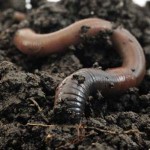No worms! One of our most recent blogs, “Don’t Forget the Squirmies”, related to all the biological aspects that composed good soil. Its goal was to emphasize the importance of living things in the soil rather than dwell on soil science and all the mineral and chemical and chemical components of soil. One thing in the blog that was missing was a discussion about one of the “squirmies”, the worms! The immediate thought about worms is that they are great, have always been here, and they can do no harm. Actually, that is a common misconception and actually false.
One thing in the blog that was missing was a discussion about one of the “squirmies”, the worms! The immediate thought about worms is that they are great, have always been here, and they can do no harm. Actually, that is a common misconception and actually false.
Recent studies have shown that of the nearly 200 taxa of earthworms found in North America are not native and are very invasive. In our forests almost none are native. The invasive species came to America in the ballast of ships coming from Europe. Fishing, landscaping, and homesteading practices helped with the spread.
What is currently understood in scientific circles is that these invasive worms in our forests are devouring the leaf litter and the fine root hairs of plants. As a consequence beneficial bacteria and fungi are beginning to disappear. The rich humus of the forest soils is disappearing along with the fantastic nutritional interactions of all the great “squirmies”. Earthworms are depleting the forest soil. This might be one of the causes of tree decline.
About the only real benefit of earthworms is that they help aerate the soil. Current thought is that they do more harm than good. It would be impossible to rid the forest of all the worms. So, what are we supposed to do about? There are a few practices that people have that we should discourage: don’t throw extra fishing worms into the woods, lakes, or streams; and don’t order worms from a gardening supply company to put in compost piles.
Now, forget the worms, go back and re-read “Don’t Forget the Squirmies”.
